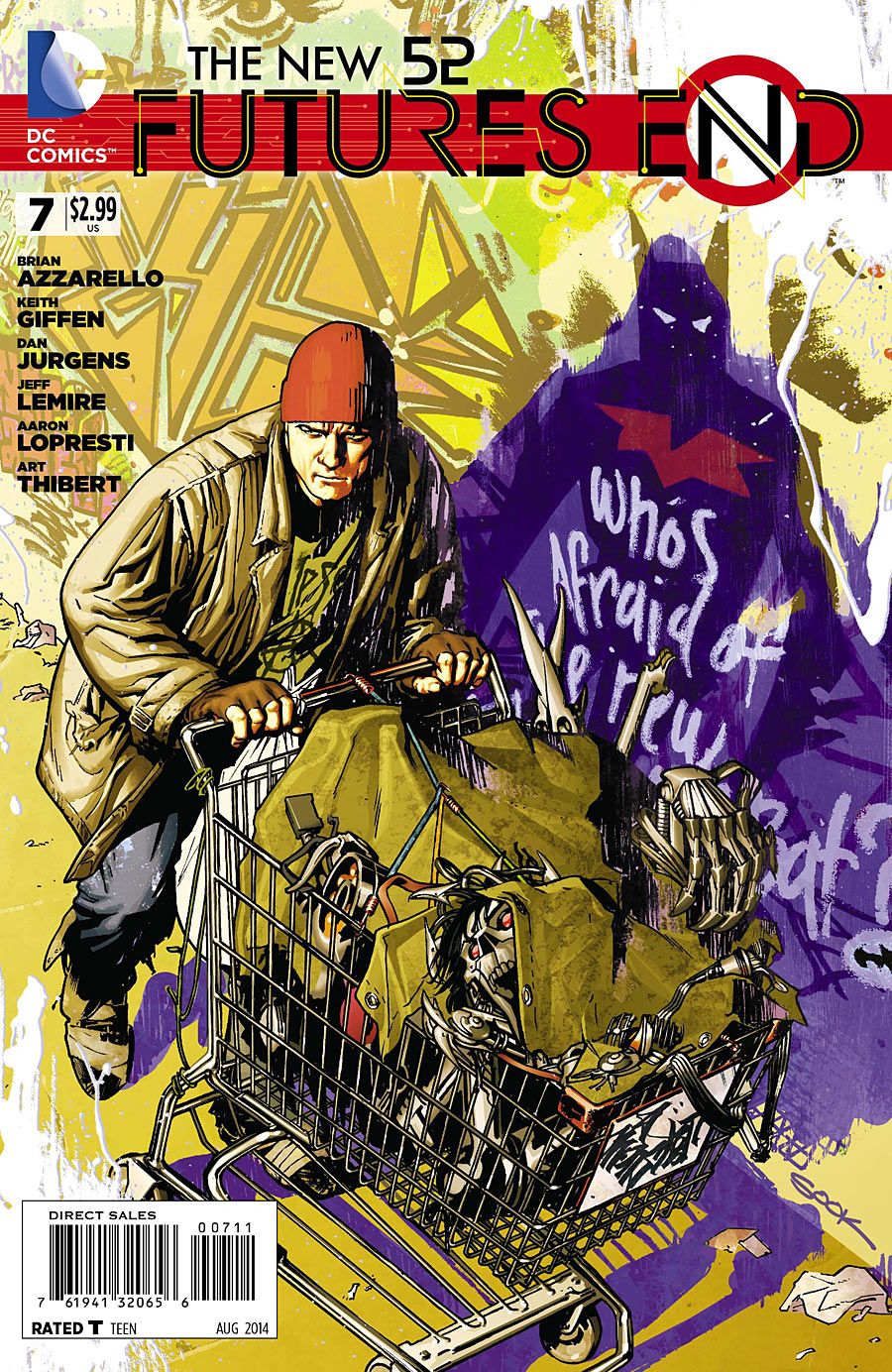"New 52: Futures End" #7 opens where the previous issue left off, with Frankenstein, Ray Palmer and Amethyst adrift in the Phantom Zone and set upon by Black Adam. Writers Brian Azzarello, Jeff Lemire, Dan Jurgens and Keith Giffen sent the trio of characters through the Phantom Zone on a shortcut to the past with the intent of rescuing Stormwatch. Of all the potentially surprising characters to encounter in the Phantom Zone, Black Adam is probably the most satisfying from a story point. The fact that he faces off against Frankenstein leaves me wanting more of that confrontation, but "Futures End" shouldn't be about two characters with such lush individual histories.
That scene is the most memorable of this issue as "Futures End" #7 hosts transitions, forgettable scenes and conflicts that don't quite pay off. Lois Lane has a chat with Madison Payne, Jason Rusch wonders about Ronnie Raymond (who is one "Lonely Man Theme" away from crushing melancholy) and Michael Holt confronts Terry McGinnis. Deathstroke also makes an appearance on Cadmus Island, but is only sparring as he chats with Fifty Sue, the mystery girl from the previous issue. Nothing really happens and no one really transforms. This issue basically serves as a who's who montage, in case readers lapsed a bit from the previous issue.
Matching the lackluster story is some thin art from Aaron Lopresti and Art Thibert. Neither of those gentlemen are slouches, but this issue is more concerned with presenting striped legwarmers on Fifty Sue and the drippy sandwich she's eating than the impressive bulk of Frankenstein or dynamic fisticuffs between Michael Holt and Terry McGinnis. The figures are only mildly covered by the usually identifiable styles of Lopresti and Thibert, which further makes the art look underdeveloped. Hi-Fi's colors are fine, but lack the pizzazz to save the overall visual impact of "Futures End" #7. The conversation between Lois Lane and Madison Payne is the most telling of the book as Lois' top goes from striped to textured while her head lacks depth. Dave Sharpe's lettering holds the characters' voices nicely, but trips over itself with Jason Rusch and Dr. Yamazake sharing balloons that were intended to be separate and voiceover captions that float a little far into the panel space.
Every series has transitional issues that establish upcoming threads, but this one doesn't do that so much as it slightly rotates the existing threads, providing readers with new perspectives on tales that need progress, not more depth. There is no mistaking "Futures End" #7 as a transition, but it also might be the most unimpressive and least memorable issue of the series.

